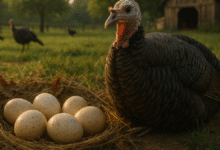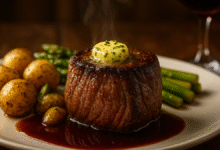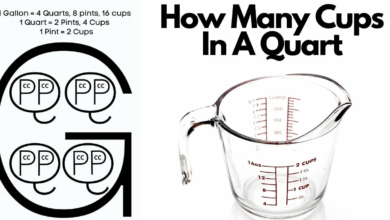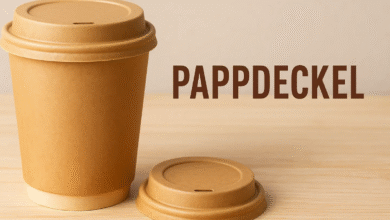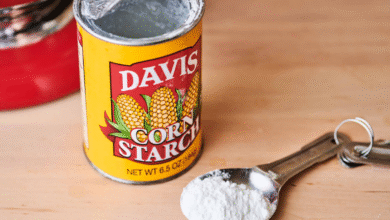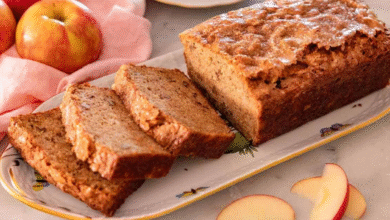What is 1/3 Cup – The Complete Guide to Understanding This Kitchen Measurement

Discover what is 1/3 cup in cooking, how to measure it accurately, conversions into spoons, ounces, and grams, plus expert tips for baking and everyday recipes.
Introduction to What is 1/3 Cup
When you are cooking or baking, one of the most common questions that comes up is what is 1/3 cup. At first glance, it sounds simple, but the truth is, measurements in the kitchen can feel confusing, especially when recipes call for fractions like this. A small mistake in measurement might not matter much in everyday cooking, but in baking, where precision is everything, it can change the outcome entirely. That is why knowing exactly what 1/3 cup means and how to measure it is such an important skill.
At its core, 1/3 cup is a fractional volume measurement used primarily in the United States, where cups are a standard part of recipes. But what does it really translate to? How do you convert it into tablespoons, teaspoons, milliliters, or even grams? And what if you do not own a 1/3 cup measuring tool—can you still measure it correctly? These are the questions we will unpack throughout this detailed guide, making sure you not only understand the concept but can confidently apply it in your kitchen.
Why Kitchen Measurements Like 1/3 Cup Matter
The reason you often hear chefs and bakers emphasize accurate measurements is simple: balance. In baking, a single extra spoon of flour can make cookies dense instead of fluffy. A little too much oil might make a cake greasy, while not enough sugar could affect the texture and color of your baked goods. When a recipe says 1/3 cup, it means that exact amount is part of the tested formula that makes the dish work.
Even in cooking, where measurements tend to be more forgiving, knowing how much 1/3 cup actually represents helps you keep flavors consistent. Imagine making a salad dressing and accidentally adding twice the vinegar intended—suddenly, your dressing is sour instead of balanced. So yes, understanding what is 1/3 cup is about more than just numbers—it’s about creating dishes that taste and look the way they should.
Breaking Down What 1/3 Cup Means
In simple terms, 1/3 cup is one part of three equal divisions of a full cup. If you filled a standard one-cup measure with liquid and then divided it evenly into three parts, each part would equal 1/3 cup. This measurement is most commonly used in recipes for baked goods like muffins, cakes, or bread, as well as sauces and marinades.
If you are more comfortable thinking in decimals, 1/3 cup equals approximately 0.33 of a cup. Though that number goes on infinitely, for kitchen use, it is always rounded to a manageable figure. Knowing this makes it easier to understand and convert into other units.
Converting 1/3 Cup into Other Measurements
A lot of home cooks don’t always have a full set of measuring cups lying around. Luckily, 1/3 cup can easily be broken down into other measurements that might be more familiar.
Here is a quick conversion table for reference:
| Measurement Type | Equivalent of 1/3 Cup |
|---|---|
| Tablespoons | 5 tablespoons + 1 teaspoon |
| Teaspoons | 16 teaspoons |
| Fluid Ounces | 2.67 fl oz |
| Milliliters | About 79 ml |
| Grams (water) | About 79 g |
This table gives you a handy way to measure out 1/3 cup even if you don’t have the exact cup size tool. For example, if your set only has a tablespoon, you know that scooping 5 tablespoons plus 1 teaspoon gets you the same result.
How to Measure 1/3 Cup Accurately
The trick to measuring 1/3 cup correctly depends on what you are measuring—liquids or dry ingredients.
For liquids: Always use a liquid measuring cup, which has a spout for pouring. Place it on a flat surface, fill to the 1/3 cup line, and check at eye level.
For dry ingredients: Use a dry measuring cup, scoop it full, and level off the excess with a straight edge like the back of a knife. This ensures you are not packing extra flour, sugar, or cocoa powder into your recipe.
Some cooks think they can “eyeball” measurements, but in reality, it’s easy to add too much or too little. Over time, you might get better at estimating, but when precision matters—especially in baking—it’s best to measure carefully.
Everyday Examples of What is 1/3 Cup
To visualize 1/3 cup in daily life, it often helps to compare it to common items.
- A 1/3 cup of liquid looks roughly like half of a standard shot glass plus a bit more.
- A 1/3 cup of shredded cheese would be about the amount you can loosely hold in your hand.
- A 1/3 cup of cooked rice looks like a small side serving at a restaurant.
When you think about measurements in terms of real objects, it becomes easier to grasp what recipes are asking for without overthinking.
Why 1/3 Cup Is Popular in Recipes
Recipes often call for fractions like 1/3 cup because ingredients need to be balanced proportionally. If a cake recipe calls for 2 cups of flour, you might see 2/3 cup of sugar, 1/3 cup of oil, and 1 cup of milk. Fractions like these make it easier to maintain consistent ratios.
Another reason is flexibility. Many recipes are scaled up or down depending on how many servings you want. Fractions like 1/3 cup allow you to adjust portions without throwing off the entire recipe.
Common Mistakes When Measuring 1/3 Cup
Even experienced cooks sometimes make mistakes with fractional measurements. The most common include:
- Using the wrong tool: Trying to measure dry ingredients in a liquid measuring cup often results in inaccuracy.
- Not leveling off: Scooping flour without leveling adds extra grams you don’t notice until your cookies come out dry.
- Substituting incorrectly: Assuming that 1/3 cup equals 3 tablespoons (it doesn’t—it’s closer to 5 tablespoons plus 1 teaspoon).
Avoiding these mistakes makes a big difference in recipe results.
Tips for Cooking Without a 1/3 Cup
If you don’t have a 1/3 cup measuring tool, don’t panic. Here are a few clever solutions:
- Use tablespoons: Scoop 5 tablespoons plus 1 teaspoon.
- Use a 1 cup measure: Fill it one-third of the way.
- Use a kitchen scale: Weigh the ingredient in grams or milliliters if your recipe allows it.
Some cooks even use everyday household items as rough substitutes. For example, a 1/3 cup of dry oats is about the same as a loosely packed handful.
The Science Behind Measuring 1/3 Cup
Cooking is an art, but baking is often described as a science. The reason measurements like 1/3 cup exist is to standardize recipes and ensure that the chemistry works the same way every time.
When you measure 1/3 cup of flour, for example, you’re not just adding powder to a bowl—you’re adding a specific amount of starch that will absorb liquid, interact with leavening agents, and determine the final texture of the food. Measuring accurately ensures that this science doesn’t go off balance.
Frequently Asked Questions About What is 1/3 Cup
What is 1/3 cup in tablespoons?
One third of a cup equals 5 tablespoons plus 1 teaspoon. This is a handy way to measure if you don’t have a 1/3 cup tool.
How many ml is 1/3 cup?
It equals about 79 milliliters. Since most kitchen measuring cups round to 80 ml, using that number is acceptable.
Can I eyeball 1/3 cup?
While you can estimate, it is best to measure accurately—especially in baking. Eyeballing often leads to too much or too little of an ingredient.
How much is 1/3 cup in grams?
This depends on the ingredient. For water, it’s about 79 grams. For flour, it might be closer to 43 grams, while sugar could weigh more. Always check a conversion chart.
What if my measuring set doesn’t include 1/3 cup?
Simply measure 5 tablespoons plus 1 teaspoon, or fill a full cup one-third of the way.
Conclusion
Understanding what is 1/3 cup might seem like a small detail, but in the world of cooking and baking, it’s a powerful tool. Whether you are converting it to tablespoons, weighing it in grams, or visualizing it in your hand, the key is precision and consistency. Now that you know the breakdown, conversions, and practical uses, you can confidently follow any recipe without second-guessing your measurements.
